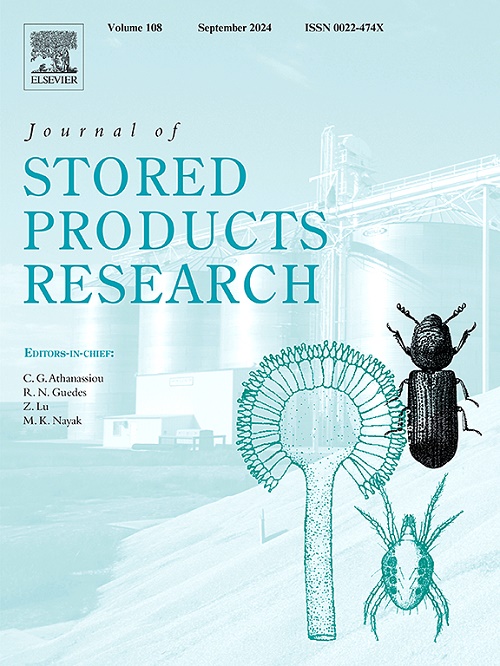甜菜碱:一种提高果蔬采后品质和生理特性的无毒方法
IF 2.7
2区 农林科学
Q1 ENTOMOLOGY
引用次数: 0
摘要
甜菜碱(GB)被认为是一种无残留、无毒的水果和蔬菜采后保存方法。这一策略在减少因加速老化和疾病发展而造成的重大采后损失方面特别有用。虽然冷却仍然是主要的采后保存方法,但它经常导致许多园艺作物的冷害;因此,GB处理是一种很有前途的采后贮藏方法。本文对近年来GB在果蔬采后贮藏中的开发利用进行了综述。此外,还研究了GB对黄瓜生理性状、次生代谢、营养特性、成熟和衰老过程、抗氧化活性、酶功能、乙烯产量、呼吸速率、细胞壁组成和相关酶活性的影响。此外,还研究了GB处理对贮藏期冷害、膜脂肪酸代谢和苯丙素代谢的影响。这一综述可能对农民和食品工业产生重大影响,因为它可能导致新技术的发展,以改善收获后新鲜农产品在采后期间的保存和储存。本文章由计算机程序翻译,如有差异,请以英文原文为准。
Glycine betaine: A non-toxic approach to enhancing postharvest quality and physiology of fruits and vegetables
Glycine betaine (GB) is considered a residue-free and non-toxic method for the preservation of fruits and vegetables during postharvest storage. This strategy is especially useful in reducing significant postharvest losses resulting from accelerated aging and disease development. While cooling remains the primary postharvest preservation method, it often leads to chilling injury in many horticultural crops; therefore, GB treatment presents a promising alternative for postharvest storage. In this article, a comprehensive investigation was conducted on the recent exploitation of GB in the postharvest storage of fruits and vegetables. Furthermore, the effects of GB on physiological traits, secondary metabolism, nutritional properties, ripening and senescence processes, antioxidant activities, enzyme functionalities, ethylene production, respiration rate, cell wall composition, and associated enzyme activities were studied. Moreover, the effects of GB treatment on the chilling injury, membrane fatty acid metabolism, and phenylpropanoid metabolism during the storage period were covered. This review could have significant implications for farmers and the food industry, as it could lead to the development of new techniques to improve the preservation and storage of fresh produces after harvest during the postharvest period.
求助全文
通过发布文献求助,成功后即可免费获取论文全文。
去求助
来源期刊
CiteScore
5.70
自引率
18.50%
发文量
112
审稿时长
45 days
期刊介绍:
The Journal of Stored Products Research provides an international medium for the publication of both reviews and original results from laboratory and field studies on the preservation and safety of stored products, notably food stocks, covering storage-related problems from the producer through the supply chain to the consumer. Stored products are characterised by having relatively low moisture content and include raw and semi-processed foods, animal feedstuffs, and a range of other durable items, including materials such as clothing or museum artefacts.

 求助内容:
求助内容: 应助结果提醒方式:
应助结果提醒方式:


